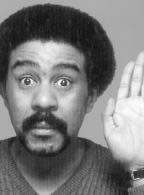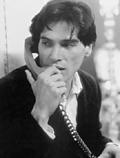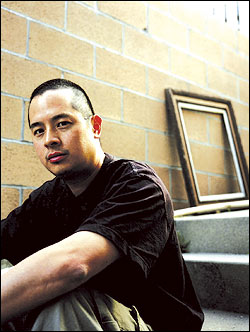WHILE I LISTENED to all nine CDs of Rhino’s new Richard Pryor box set in succession, two things happened. The first—naturally enough—was laughter. Since the discs compile each of Pryor’s Warner Bros. albums in chronological order—from 1968’s Richard Pryor to 1983’s Here and Now—the original audiences get successively larger, marking his transition from clubs to amphitheaters, with the final disc, That “African-American” Is STILL Crazy (which collects outtakes), serving as a coda. So the actual sound of laughter gets louder all the time.
Richard Pryor
. . . And It’s Deep Too! The Complete Warner Bros. Recordings, 1968- 1992 (Rhino)
And Pryor gets, if not increasingly funny, a lot more specific—about his life, his problems with women and drugs, about gaping racial misapprehensions, about the isolation of fame. Yet even when you need to know his backstory to understand what he’s talking about, he never sounds solipsistic—just so attuned to human nature that the knife gets sharper the closer he puts it to his own neck. If that sounds like an odd analogy for a comedian, you obviously haven’t heard Pryor.
The second thing I realized (not a little queasily, either) is that no comic has ever gotten more laughs out of not-funny subjects—not unfunny, just Not Funny—such as the Holocaust or slavery, about which Pryor (naturally) does many jaw-dropping minutes. It also provides the title routine of 1976’s Bicentennial Nigger, which isn’t funny at all, because he doesn’t mean it to be; it’s the single most bone-chilling segment of the box.
And that’s on a collection that includes the astonishing “Hospital,” from 1982’s Live on the Sunset Strip, maybe the 10 best minutes Pryor ever did, all hinging on the subject of (drumroll, please) Pryor’s inability to kill himself by setting himself on fire! (Cue rim shot.) Not that many people knew this at the time: The official story was that the fire was an accident while Pryor was freebasing cocaine. A few years later, he admitted that the fire was actually a suicide attempt. This present-day knowledge adds a chilling undertone to a line like “I did not burn up freebasing— I burned up because I quit freebasing!” But even now, years after Pryor came clean about the incident, many people still believe the fire was an accident, thanks in no small part to the “Hospital” routine—art will out, or something.
SOFTENING THIS STORY may be the only time on this box that Pryor lies, even a little, to his audience. Early in his career, Pryor deliberately stifled his own voice, becoming a pan-racial universal-truthster ࠬa Bill Cosby. (Cosby himself was an early supporter.) But by Richard Pryor, he’s as direct as he can be, and each successive album proceeds to pare that honesty a little closer to its raw essence. Early on, this frequently meant flights of character-fueled inspiration like the self-explanatory “Wino Dealing with Dracula,” from 1974’s That Nigger’s Crazy, and the self-obsessed preacher of Bicentennial Nigger‘s “Bicentennial Prayer.” By the time of Wanted: Richard Pryor Live in Concert, a double album documenting his 1979 concert film, Pryor’s own life was providing scenarios so harrowing and bizarre that he stopped having to make them up: shooting up his wife’s car or holing up for several weeks with a talking freebase pipe. (“We’ve got smoking to do,” beckons the pipe, sounding like a cross between Richard Nixon and Martha Stewart.)
Because Pryor forged such an intense bond with his audiences, it’s hardly unusual that all of his albums were live (that’s where comedians do their work). But it’s worth noting that he was making his formal breakthroughs during a period when many of the most innovative comedy albums were created in multitrack studios (Monty Python, the Firesign Theater). Pryor needed only a microphone and an audience to come up with albums that reward repeated plays; each listen uncovers a stray comment or a previously unheard inflection. Take “When Your Woman Leaves You,” from 1975’s . . . Is It Something I Said?—Pryor could have been a great comic based on his one-liners alone. (“When shit gets too thick [emotionally], niggers got a great answer: ‘Well, FUCK IT THEN.'”) Instead, he builds them, one atop another, into some of the most clear-eyed observations about muddle-headed behavior you could hope to hear. “We started off as human beings; I want it to end that way,” he tells his woman as she packs her bags, “All you have to do is find another way out of here other than that door.”
Pryor’s art inheres in his performances, and you can thank Pryor the writer for that particular gift: He talks slangy and plain, never sounding like he’s planned what he’s saying, but the way he maps out his terrain should qualify him for the Cartographer’s Hall of Fame. Sometime Weekly contributor Jay Ruttenberg once wrote, “Every hack comic on the BET ransacks [Pryor’s] routines, but somehow they come away with observations about black folks enjoying ribs more than white folks, or how lame white guys look in slacks.” All these years later, . . . And It’s Deep Too! proves that Pryor’s genius is not only still discernible but, if anything, deeper than ever.








